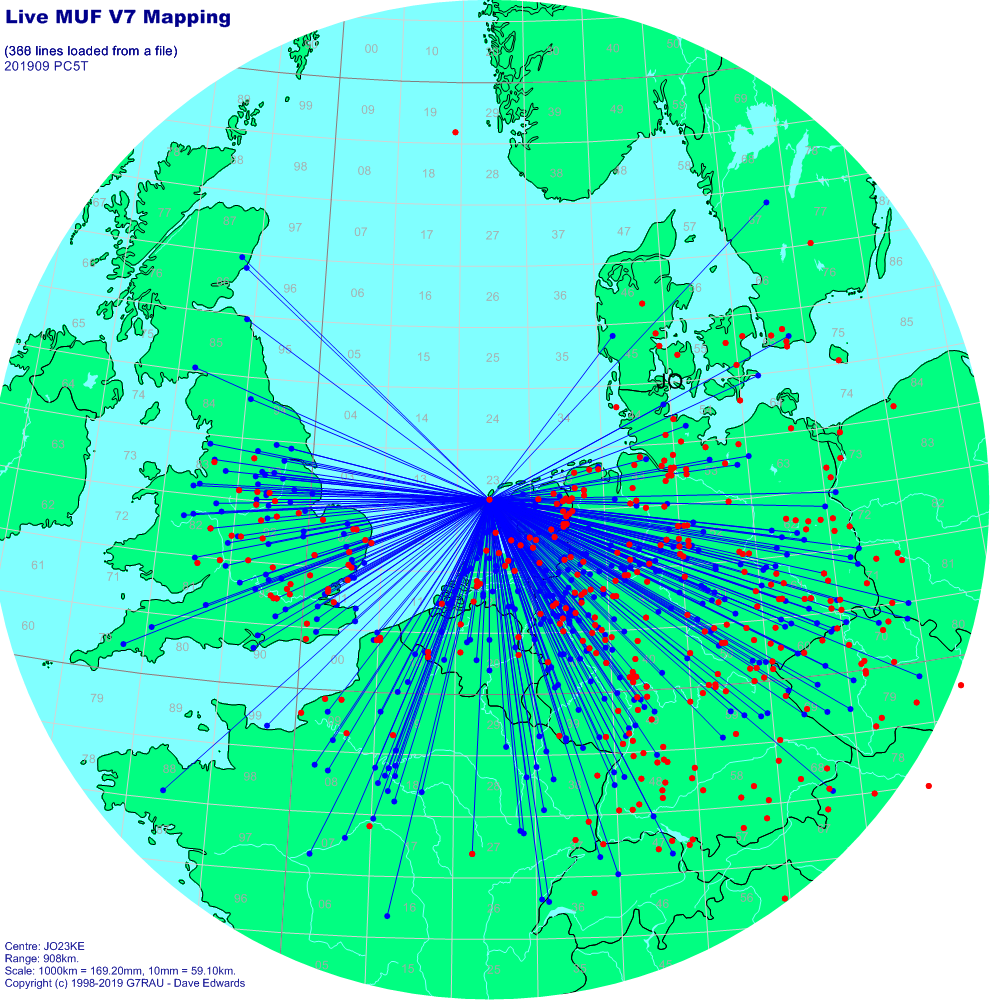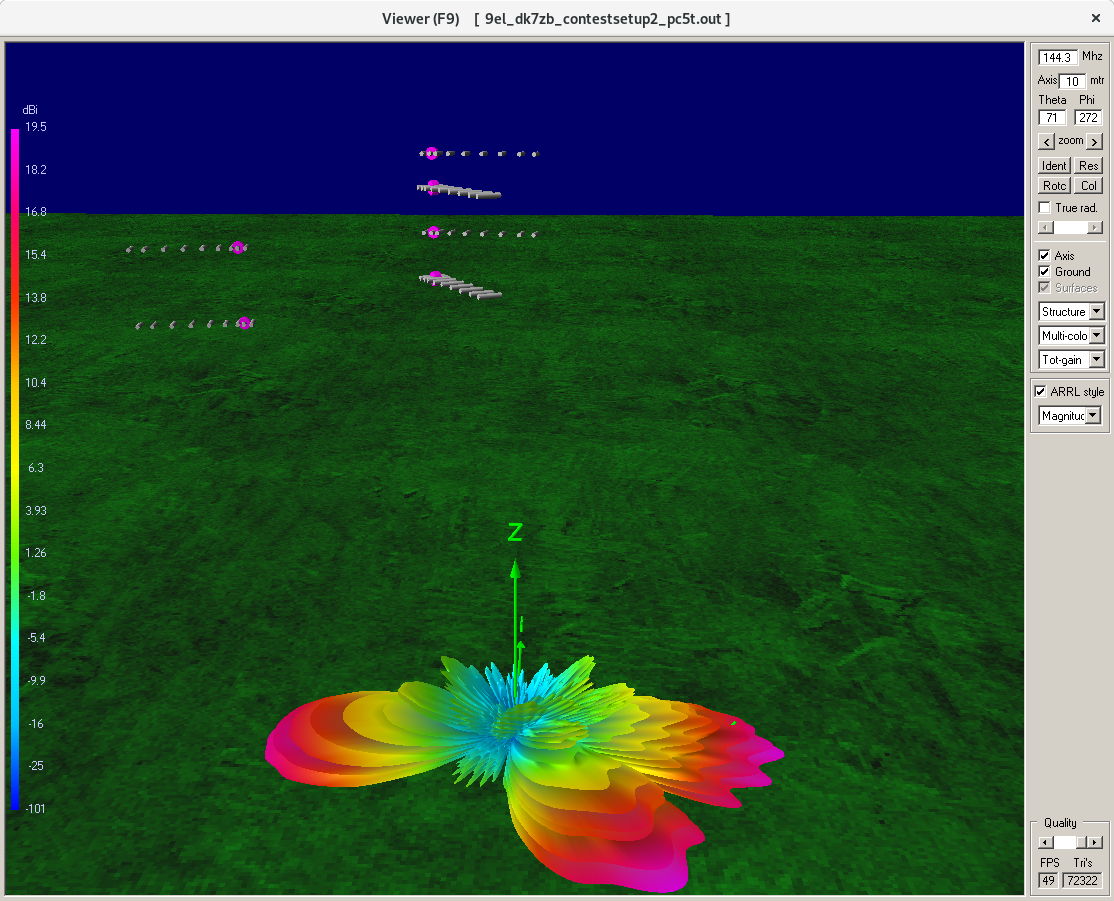Missed stations
Our main competitor is the PA1T station. Our QSOs on the map below (blue lines). The red dots are the stations that we, PC5T, missed but that PA1T did work. It is immediately noticeable that most of them are in the east and south-east. It is also striking that these stations are not even much further away. We could have worked those stations. I don't think PC5T is noticeable when these stations are tuning on the band.We simply need to stand out more with more ERP in the east and south-east direction. And the audio must be penetrating.

Blue lines worked stations by PC5T. Red dots are missed stations

Blue dots. Worked by PC5T and not worked by PA1T
Antenna setup and the fourth system
6 years ago I once explored the antenna properties of a multi system station. This is described on this web page: 144MHz Multiple Antenna System Setup for Contesting
I have done this again for the 2019 situation. The antenna pattern as the antennas were most of the time is overlaid on the card with the QSOs made.
1. I notice the red dots in the north-east. Because of the fourth system, we hardly moved the east system to the north.
2. The constriction towards south-east is caused by interference from the baseline on which the antenna systems are located. Little can be done about this because the masts are in fixed positions. However, the depth of the necking does depend on the direction in which the antenna systems point. An earlier analysis showed that these must always be more than 30 degrees apart. I think we have turned too little with the antennas. Also because of that fourth system. The constriction has persisted and we are not well heard in that direction. The solution is less antenna systems and more turning to be heard better. Here less is better :-)

Antenne situation 2019

Antenna patern overlaid on QSO map. It's not exactly right, but it is a little bit....
4db more ERP
The extra 4db needed is determined with propagation tools for FM DXers. This tool is on FM list and it is especially on FM scan. The method I used is to take some FM stations that are located in south-east Germany. The signal strength of these transmitters in the Netherlands can be calculated. It is clear that this is not a direct line radio propagation, but more tropo scatter-like propagation. If you compare the location in JO23KE with, for example, JO33 or JO22, the signals with an equivalent station are generally 4 db weaker in JO23KE. The reverse is also true. The simple conclusion is therefore if we have 4db more ERP at PC5T then that difference is canceled ...Another approach is table below. For most contest location the difference has been calculated with some known stations. I have taken PA1T as a reference. You can see that PC5T is on average 5 db short with comparable station setup.

difference in signal intensity in dB
HOME | Go Back